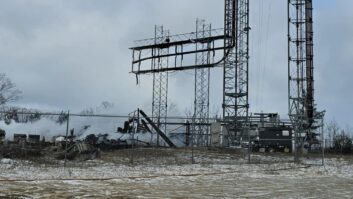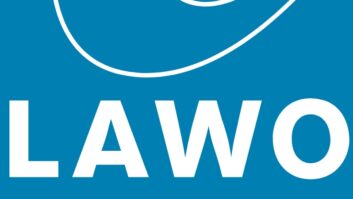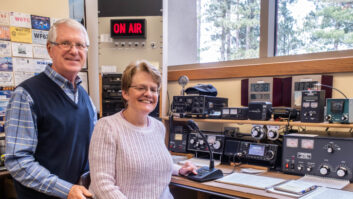Building Codes and RS222-G
Aug 1, 2011 1:00 AM, By Kevin McNamara
One of the realities of the broadcast business is that we all use antennas, whether mounted to a structure or simply using the structure as the antenna. In most cases that structure is a tower or pole. Those of us who have had to build a new tower or modify an old structure are well aware of TIA-222, the standards document that provides guidance in the design of communications towers. This standard has been around since 1949 and fittingly titled “Structural Standards for Antenna Supporting Structures and Antennas.”

A few years ago I outlined the history of the development of the TIA-222 standard. While I’m sure the majority of you have a pretty good understanding of the document, it’s worth reviewing since it has evolved dramatically over the years.
Revision E was the first iteration of the code to be defined by the TIA and Electronics Industries Association (EIA) and thusly called EIA/TIA 222-E. It further created a wind-loading map based on specific counties within each state, as well as directing the engineer to consider and design for specific conditions that might exceed the standard values.
The evolution of TIA-222
The EIA RS-222 standard was first published in 1949 and encountered only two updates until 1980, when the 222C version was published. This was an important document because it took into account more of the real-world knowledge acquired as the deployment of so-called tall towers (up to 2,000′) were becoming widespread and the effects of wind and icing were becoming apparent. Not only were these towers taller, but they supported significantly more weight, particularly with TV antennas.
Version C provided a method for rating wind load based on the tower’s height and location. A map of the United States was delineated into three wind zone categories labeled A, B and C. The wind loading was considered over the full length of the structure and was measured in pounds per square foot (PSF). The specific PSF rating started at about 30PSF and increased based on the tower height.
The 222-D specification made a dramatic change to the way wind loading was calculated. First, the wind speed was measured in miles per hour (MPH) and a new map was created that depicted basic wind speeds measured at 33′ above the ground. The value for basic wind speed increased as a function of tower height.
– continued on page 2
Building Codes and RS222-G
Aug 1, 2011 1:00 AM, By Kevin McNamara
EIA/TIA 222-F was adopted in 1996, expanding to include the effects of ice loading. Basically, it provided two methods for analysis of ice. Both assume an accumulation of ice based on that specified by the engineer; however, the wind load applied to the tower could be analyzed at full-speed or at about 75 percent of the full assumed speed.
The current version ANSI/EIA/TIA-222G took effect Jan. 1, 2006, and was essentially a top-to-bottom rewrite. It is also the most comprehensive standard to date and takes into account certain classifications of a structure based on its location and anticipated wind, ice and seismic factors. It considers topography that may affect a structure’s exposure to wind, i.e. behind a mountain, atop a hill, etc. In previous standards the design of a structure was based on “allowable stress” 222G bases designs on “Limit State Loading.” In this case Limit State Loading is based on two conditions: Strength Limits, which essentially define the maximum loading a structure can tolerate and still be safe for the subject location and classification; and the “Serviceability Limits State” describes how the tower will perform under more normal conditions. There are now requirements for towers located in seismically active zones.
222G also expands on the safety requirements that were addressed in the previous version. It categorizes the experience of individuals that might climb a structure and specifies specific safety items to be included with the design of a tower, i.e. safety cables, ladders, rest platforms, etc.
222G vs. ASCE 7 vs. IBC
New tower construction became more prevalent over the last 10 years largely due to the widespread deployment of wireless mobile telephone networks. The majority of municipalities were not prepared for the volume of applications to construct new towers. In many cases, weak (or no) zoning ordinances were on the books, leading to confusion and several heated zoning meetings. More recently most of these same municipalities have become much more sophisticated in terms of balancing the needs of the tower owner with those of the public. While the zoning piece of the deployment process is well defined, there has been confusion with the permitting and subsequent inspection of an approved structure.
Early building codes did not address the unique nature of tower construction. Once a permit is issued, how (and on what) does the municipality perform a proper building code inspection? The general answer is that an inspector will only sign off on the foundation(s) and assume the structure passes if the design/construction is based on drawings stamped/sealed from a professional engineer licensed in that state. In the earlier revisions of the 222G standard (E and below) there was no correlation between the standard and any building code.
– continued on page 3
Building Codes and RS222-G
Aug 1, 2011 1:00 AM, By Kevin McNamara
Until 1994 there had been three different building codes used: BOCA National Building Code (BOCA/NBC), Uniform Building Code (UBC) and Standard Building Code (SBC).
The history of building codes in this country could be the subject of a separate article, but it is important to know that these codes were combined into a single document called the International Building Code (IBC) first published in 2000. Most jurisdictions currently use either the 2006 or 2009 version of the IBC. Portions of the IBC, particularly those that require competency in specific engineering disciplines, reference other standards documents. One such standard is the Minimum Design Loads for Buildings and Structures published by the American Society of Civil Engineers (ASCE-7). In civil engineering applications this document the effects of wind, ice and seismic activity on traditional building structures. The 222G standard now incorporates the wind map data specifies in ASCE-7, which uses the latest information gathered throughout the country. The previous version of the 222(F) standard also referenced an earlier version of the ASCE-7(-93), which utilized a different method to calculate wind and ice loading (fastest mile) but ASCE-7 has been revised three time since then and are using a different method (3-second gust) to calculate loading. The latest version ASCE-7-10 has made further adjustments to the loading tables.
Now the loading for both tower designs and building designs are can be addressed in the IBC as specified uniformly through ASCE-7.
You should note that both the ASCE-7 and 222G standards were written so all or portions could be included within the IBC. It is still up to the specific jurisdiction as to whether they chose to adopt these portions into their local codes.
Want to know more?
Order the standard from the TIA website
McNamara is president of Applied Wireless, Cape Coral, FL.
August 2011
Remote site control, a tour of Dial Global’s new Denver operation, Field Reports on the RDL EX-MCP1 and Behringer EPA 105 and more….
Changes in tower standards
Sometime this year the Telecommunications Industries Association (TIA) will release the most comprehensive revision to the tower standards since 1996….












